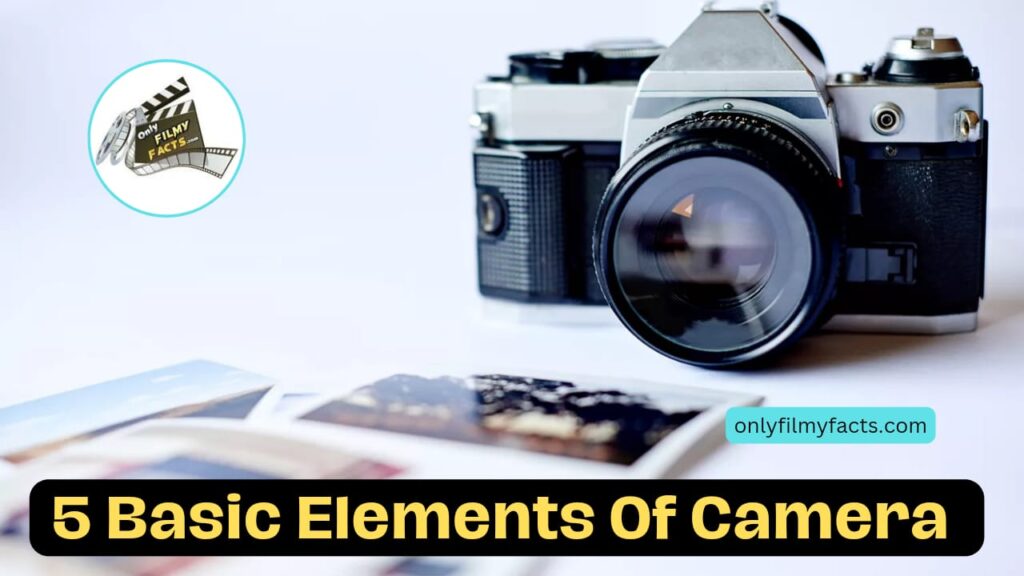Everyone is familiar with The cameras: you most likely own an SLR, DSLR, or point and shoot, and your phone undoubtedly has a camera as well.. But what is a camera? A camera is, at its most basic, an apparatus for taking pictures. There is more to it, though.
Your camera is a tool. No different than a wood carver’s chisels. Finely crafted artwork is created by woodcarvers, not by chisels. The same holds true for your camera. The photographer creates the photograph; the camera does not make the photograph.
Never give in to the illusion that the camera is in charge. You have to use the camera like a tool because that is what it is.
1. What Is a Camera?
If the camera is reduced to its most basic components, it is simply a box that regulates the amount of light that reaches an internal light-sensitive surface (which could be a digital sensor, film, or another surface). Although most modern cameras come with a glass lens, a surface that collects light, and a light-tight box, the original cameras did not even have a glass lens.
Even though it has evolved greatly from its simple beginnings, a camera is still just a box that regulates the amount of light that can reach a film (or sensor).
2. The Camera Body
A camera’s light-tight box, which enables light to be recorded on film, paper, or a digital sensor, is essentially its ‘body’. Camera bodies have a wide range of intended uses and are available in a variety of styles, shapes, and formats.
- Large format cameras: The photographer has complete control over exposure and perspective with these cameras because they are made for 4×5-inch or larger sheet film (or digital backs). They are often identified by the bellows, which makes even modern cameras look ‘old-fashioned.’ Manually operated, these are preferred cameras of commercial and fine art photographers.
- Designed to use 120 films, medium format cameras come in many shapes though they often have a boxy look. Hasselblad and Mamiya are among the most popular manufacturers and these have been the trusted cameras for professional portrait and commercial photographers for decades. Even with the prevalence of automatic features, many are still operated manually.
- SLR and DSLR cameras: SLR cameras are the 35mm film versions of modern DSLR cameras and these are the most common cameras used by today’s pro and serious amateur photographers. The terms “single-lens reflex” and “digital single-lens reflex” indicate that, when using a viewfinder, you are looking through the lens directly (this is not the case with rangefinders). The lens-changing capability of these cameras is another noteworthy feature.
- Point and shoot cameras: Common before cell phones, nearly every family owned one. As technology advanced, they most likely transitioned from 110 to 35mm film and then to digital cameras. Because the internal lens optics are still better than those found in camera phones, they are still manufactured and used.
- Phone cameras: Yes, even your cell phone is now a camera thanks to digital photography. It is so popular that there is even a genre of photography called iPhoneography, so it cannot be ignored in any discussion about cameras.
While there are other types of cameras as well, the ones mentioned above are the most widely used.
3. The Camera Lens
The first cameras used a tiny hole (called a pinhole) in the front of a box to allow in light and to focus the image onto a viewing surface. The idea here is the same as when kids safely view a solar eclipse projected onto the ground by poking a pinhole in a piece of paper.
Glass lenses are used in modern cameras to focus and capture light much faster. When glass elements are used in certain combinations, we can also magnify images. Thanks to advancements in magnification, we can now zoom in on a scene without switching lenses.
4. The ‘Film’ Plane and Shutter
The film plane and the shutter are two additional components that are necessary for the operation of the camera. Without these, we would not be able to capture an image or control the amount of light hitting the film plane.
The ‘film’ plane has evolved into a digital sensor in digital cameras, but the idea and function remain the same. They are the locations where the picture is taken with the camera.
Compared to the first film and paper surfaces used, film technology has advanced and is now more sensitive and finely detailed. This made it possible for us to capture pictures in low light, pause motion, and produce sharper, more contrast-rich images. Digital sensors, which often replace film, were created using all of that technology and expertise.
Today’s cameras also have shutters that control the light from reaching the film or sensor with the touch of a button. Although there are many variations in shutter technology, they are all built with a variable aperture opening (called the f-stop) and a shutter speed—the time at which the shutter should be open. Strong flashes are another tool we have to help light up scenes.
5. What Is Next for the Camera?
Only time will tell where technology takes the camera. As we have seen in the first two hundred years of photography, it is bound to happen quickly and it is unlikely that any of us will be able to make an accurate prediction.

